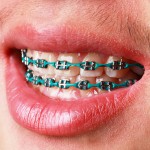
In the UK around 25% of 12–year-olds have a Class II malocclusion. For those having treatment relapse rates have been reported to vary between 20-52%, although these vary in extent and clinical significance. While a number of factors have been linked with relapse there is little consensus on which factors influence relapse.
The aim of this study was to investigate, the possible factors influencing the sagittal stability of treated patients with initial Angle Class II malocclusion.
Methods
Searches were conducted in the PubMed, Embase and Cochrane Library databases. Longitudinal studies (randomised clinical trials [RCTs], prospective or retrospective studies) investigating associations between at least one factor and stability following Class II malocclusion treatment with a minimum follow up period of 2 years were considered. Two reviewers independently selected and assessed the quality of the articles.
Results
- 17 studies involving a total of 817 patients were included.
- All 17 studies were retrospective, 14 were considered to be of moderate quality and 3 of low quality.
- 12 studies assessed the influence of different types of orthodontic treatment on stability (functional or fixed appliances with or without extractions).
- 5 studies assessed the influence of patient characteristics on stability.
- There was marked heterogeneity in interventions and reported outcomes within the included studies
- Two factors considered to be predictive of relapse, were large changes in molar and canine relationships during treatment however the evidence was of limited quality.
- Limited evidence suggests that 14 factors were not predictive of relapse. These factors included treatment characteristics (treatment timing, length of treatment, retention time, and length of follow-up) as well as patient pre-treatment characteristics (molar relationships, overbite; SNA, SNB, and ANB angles; maxillary, mandibular, and inter-maxillary plane angles; incisor inclination), and final post treatment characteristics (overjet, molar relationships.
Conclusions
The authors concluded:
There is currently limited evidence to support the influence of factors predictive of sagittal stability following Class II malocclusion treatment. More high-quality prospective studies are needed, and functional factors possibly affecting relapse also need to be further assessed.
Comments
Three major databases have been searched for this review and while the search was not restricted to English language studies only those published in English met the inclusion criteria. All the included studies were retrospective and the authors note that they generally had small sample sizes and high attrition rates, which they had to take into consideration. This together with the fact that there was marked variation in both the definition and measurements of relapse has implications for the findings. While there is a clear need for higher quality studies there is also a need for broader agreement on the definitions and measurement of relapse to improve the quality of future review of this area.
Links
Primary paper
Wins SM, Antonarakis GS, Kiliaridis S. Predictive factors of sagittal stability after treatment of Class II malocclusions: A systematic review. Angle Orthod. 2015 Nov 30. [Epub ahead of print] PubMed PMID: 26618887.
Other references
Dental Elf – 9th Dec 2015 – Class II malocclusion- fixed or removable functional appliances?
